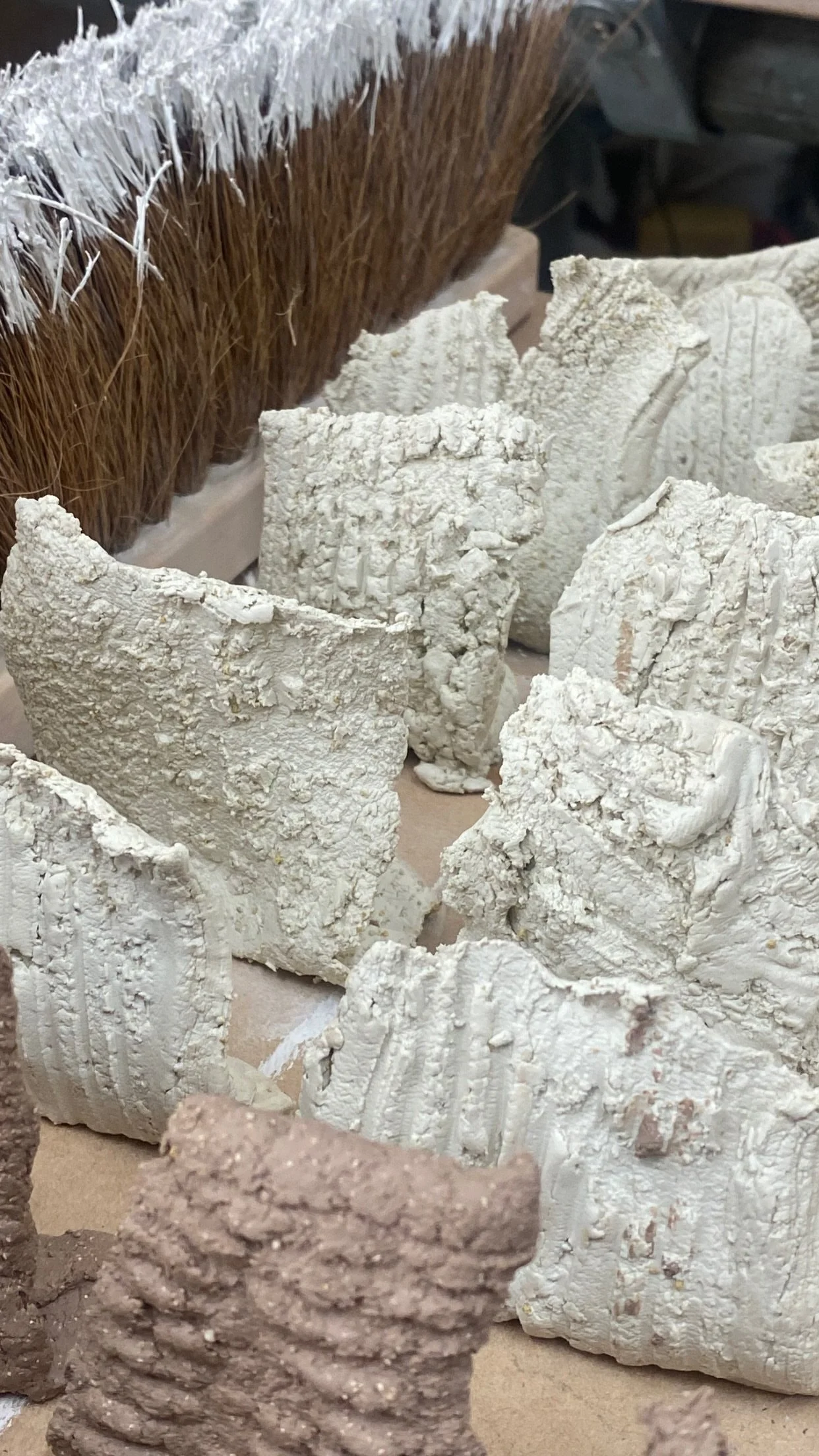Anaphora Amphora marks the beginning of a new body of work that extends from the Ìchnos series, continuing the use of gesture as a methodological tool to rediscover and reinterpret ancient ceramic artefacts and respond to collections. Returning to the vessel, beginning with Cypriot amphorae, this process and material drive research will trace the marks, memory, and movement embedded within form and surface. This body of work begins with fragments and small studies: a slow process of unearthing and resurfacing, where gesture becomes a form of remembering, and the vessel as a site for carrying time, touch, and transformation.
Anaphora (Greek ἀναφορά, anafora): a carrying back; repetition; returning to form or memory.
Amphora (Greek ἀμφορεύς, amphoreus): an ancient Greek jar or vase with a large oval body, narrow cylindrical neck, and two handles that rise almost to the level of the mouth broadly : such a jar or vase used elsewhere in the ancient world.







